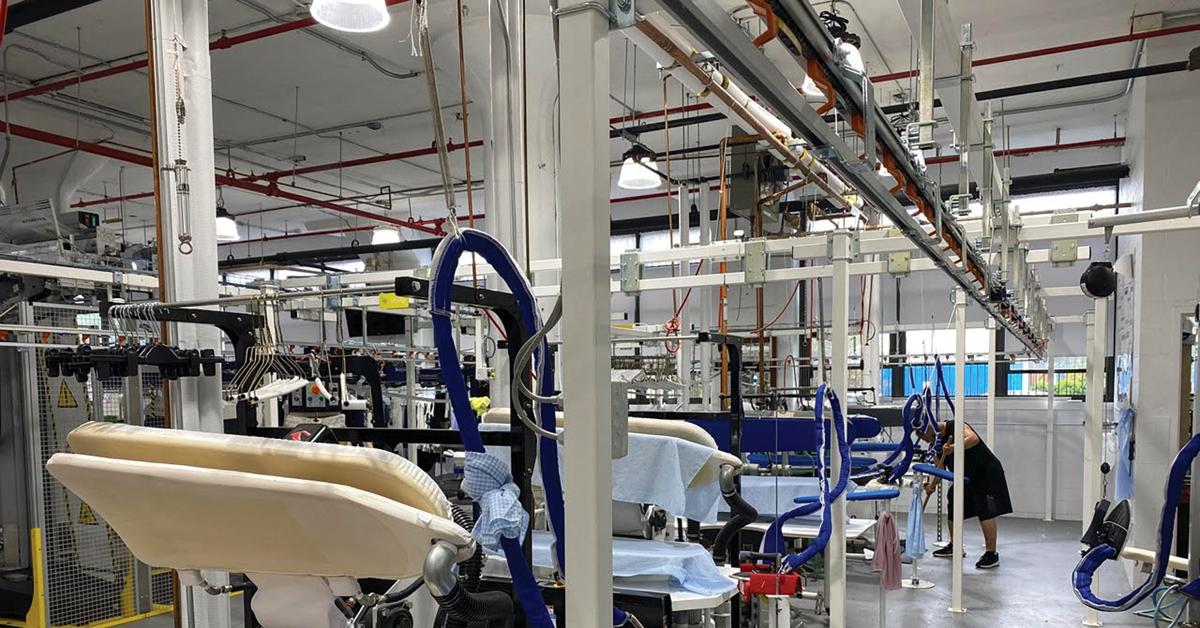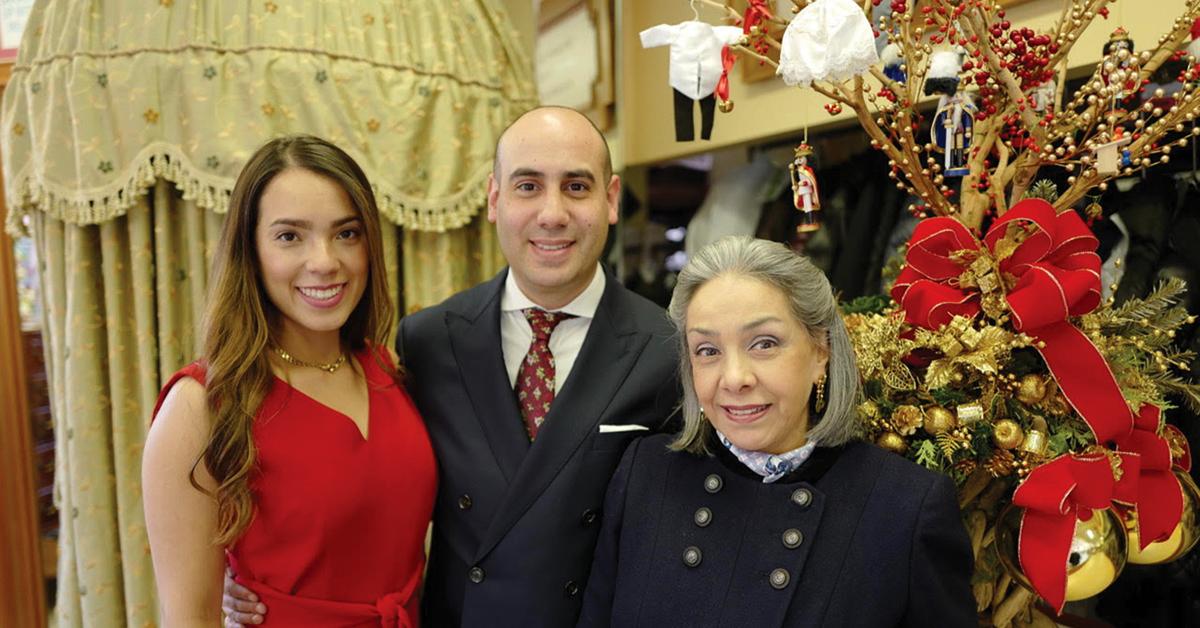NEW YORK — Finishing is one of the best parts of a drycleaning operation to make a client’s order look its finest.
In Part 1 of this article, Richard Aviles, CEO of Kingbridge Cleaners, New York City, shares his company’s philosophy for doing a top job. Its story involves training to shoot for perfection and learning the power of using the phrase “thank you” throughout a business to support and help each other to finish jobs the best they can.
Training in the Kingbridge Cleaners finishing department always starts with a philosophy of production and is heavily rooted in the culture of the New York City business, says Aviles.
“First, each team member understands that ‘Everything comes in through the eye.’ The first thing the customer is going to see is how beautiful and wrinkle-free their piece hangs on our hanger.
“Keeping this mentality in mind drives us toward the perfection of each piece and ensures the garment is always ready to be worn. While we may not be the fastest production facility, we have avoided the need to re-press pieces that other finishers would have allowed to pass to inspection.”
Joseph and Victoria Aviles, Richard’s parents, founded Kingbridge Cleaners in 1968. What started as a small franchise in Parlin, New Jersey, named Betty Brite Cleaners grew into an operation that services the greater New York area.
The company’s new corporate headquarters occupies 7,300 square feet in the Brooklyn Navy Yard. It has two retail boutiques in Soho, Manhattan, and downtown Brooklyn, and features four pickup and delivery vehicles and six routes. The firm describes itself as a work-family of, until recently, 46 employees.
Richard Aviles reflects on the Kingbridge philosophy of finishing: “Another equally important aspect of our production is the fact that every department has jurisdiction over the last process. If someone in our inspection department feels a piece could have been pressed better and returns it to the finisher — the finisher says, ‘Thank you.’ The thank-you is a genuine one when they understand they have the opportunity to do a better job.”
His entire team works together toward perfection, Aviles says, and realizes that even a slight imperfection can begin to instill doubt in a customer’s mind about Kingbridge’s craft.
His team also understands that it is not just selling a service.
“We are improving how our customers are perceived by others. When our customers feel better and more confident, we feel we’ve moved the needle in the right direction.”
Kingbridge Cleaners has seven employees working in its finishing department: three on utility presses, one laundry shirt presser, one hand-finished shirt presser, and one pants finisher. “We also have a utility presser that doubles on our vertical pressing station. One employee finishes the sweater and household items.”
Equipment and fixtures include three utility pressing stations with accompanying suzy; two toppers with complementary double-leg finishers; a hand-finishing shirt station that’s made up of a cuff and collar machine and a touch-up board; a double cuff and collar; a double-buck shirt machine; a large sweater board; a 5-foot linen hothead press; a tunnel box finisher; and a vertical press station used for uniform work and silk conditioning.
In the finishing department, it is important to identify the roles each team member plays, according to Aviles.
“Within our finishing department, each team member is cross-trained on how to perform the function of other finishers’ workstations, but not other departments,” he says. “If for any reason someone can’t come to work, someone can assume the missing employee’s responsibilities for that day.
“While in the past and when the business was smaller, finishers were cross-trained on other departments’ functions. The finishing department and other departments have grown to a size where that’s no longer a priority. However, everyone is responsible for the cleanliness of their workstation. You can’t spend time and effort cleaning something only to bring it into a dirty workstation on an old, dirty finishing pad.”
LET’S ‘DISCO’
Are there any new advances in your finishing department, either in machines, software, or in the way your team members work to finish garments?
Kingbridge’s distribution conveyor, which has been named “DISCO,” is a new design of a finger-rail that allows the movement and distribution of pieces throughout the production facility. One of its benefits is its extremely narrow profile accommodating space requirements of the smallest plants, and its ease of use.
“Another important benefit to mention about the DISCO is its ability to evenly distribute work to ‘like finishers,’” Aviles says. “For instance, if you have three utility pressers who have in the past argued over receiving ‘more complicated’ work than their team members, or more volume, the DISCO designates which piece goes to which finisher without prioritizing one over another, and has no bias in what’s being distributed.
“Each utility finisher will receive the same amount of work, and over time, the same distribution of item types. The person who is loading the DISCO only chooses what department to send the piece to, and the PLC does the rest of the work.”
The owner shared a story of how team members support one another in the business.
“We have a finisher who has worked with us for two decades. He received a black Oscar de la Renta cocktail dress for finishing. Unbeknownst to him, an oversight, the cocktail dress had black leather stitching throughout it. He dressed a suzy with it and when he steamed it, it went from a size 8 to a size 2. Nervous, embarrassed, and beside himself that he had just ruined a perfectly good garment of one of our best customers, he brought it to Victoria.
“Victoria gave him a hug and said, ‘Thank you.’ Victoria thanked him for making the mistake and for not hiding it and letting her know or, worse, blaming someone else. We then contacted the customer’s stylist, purchased the same dress that day, and had it delivered to the customer.
“We all make mistakes once in a while, regardless of experience. We all learned very valuable lessons that day. Not just in the finishing of a garment, but also how to treat others and lead by example.”
Aviles has a couple of tips to pass along to dry cleaners who are thinking of adding personnel and/or new equipment to their finishing department.
Don’t underestimate the amount of time and distraction that goes into the actual logistics and movement of a garment, and how it detracts from a cleaner’s production efficiency.
“In our new facility, we’ve set it up so our finishers never have to take more than a half-step to receive the next piece to be pressed, and a half-step to send it to the next process,” he explains. “The finishing process in many cleaners is the most time-consuming process. Any effort to save time through automation will pay off in dividends.”
Sometimes, without anyone to listen to them, finishers are left to their own devices.
“It’s easy to speak to those employees who do the cleaning and those in assembly and bagging. Finishers are as much of the process as any other department and they deserve to be heard,” says Aviles.
“Being situated along the process between other departments, they see a lot more than we give them credit for and they often have great suggestions for how to make things better. All you have to do is ask. They will appreciate it.”
—Tim Burke
Coming Thursday: The owner of Mastercraft Natural Garment Cleaning, Fresno, Calif., discusses the benefits of cross-training team members
Have a question or comment? E-mail our editor Dave Davis at [email protected].

